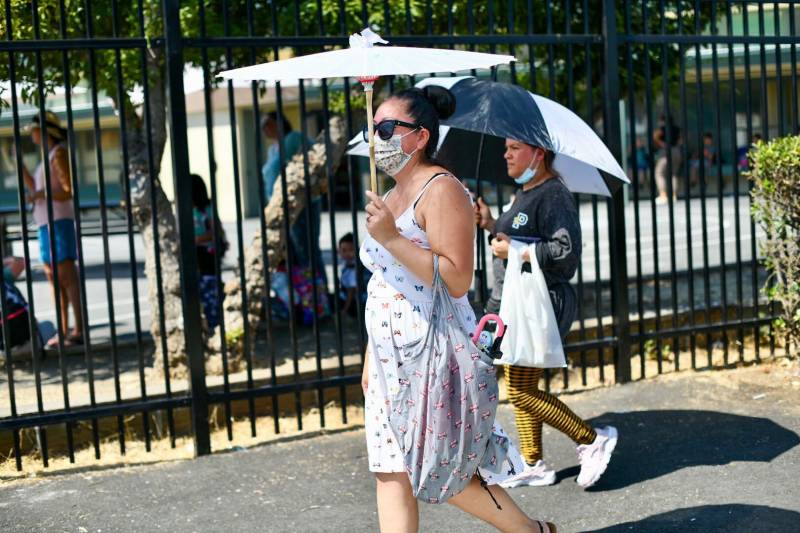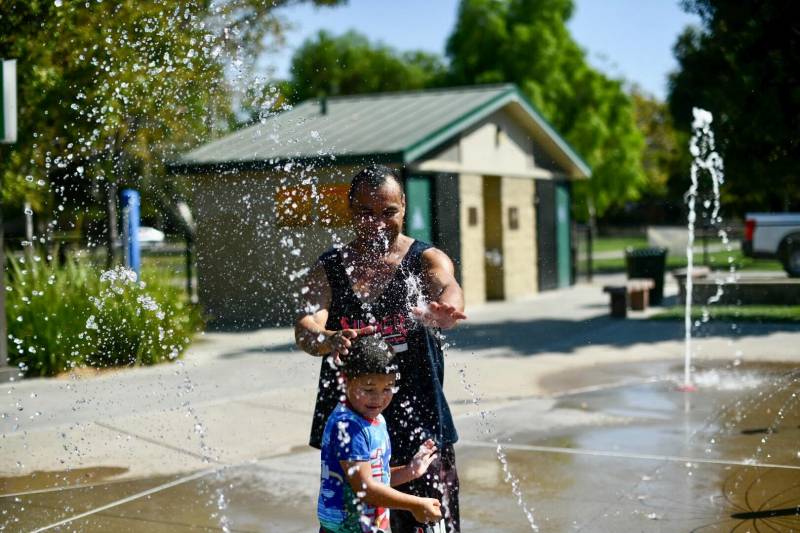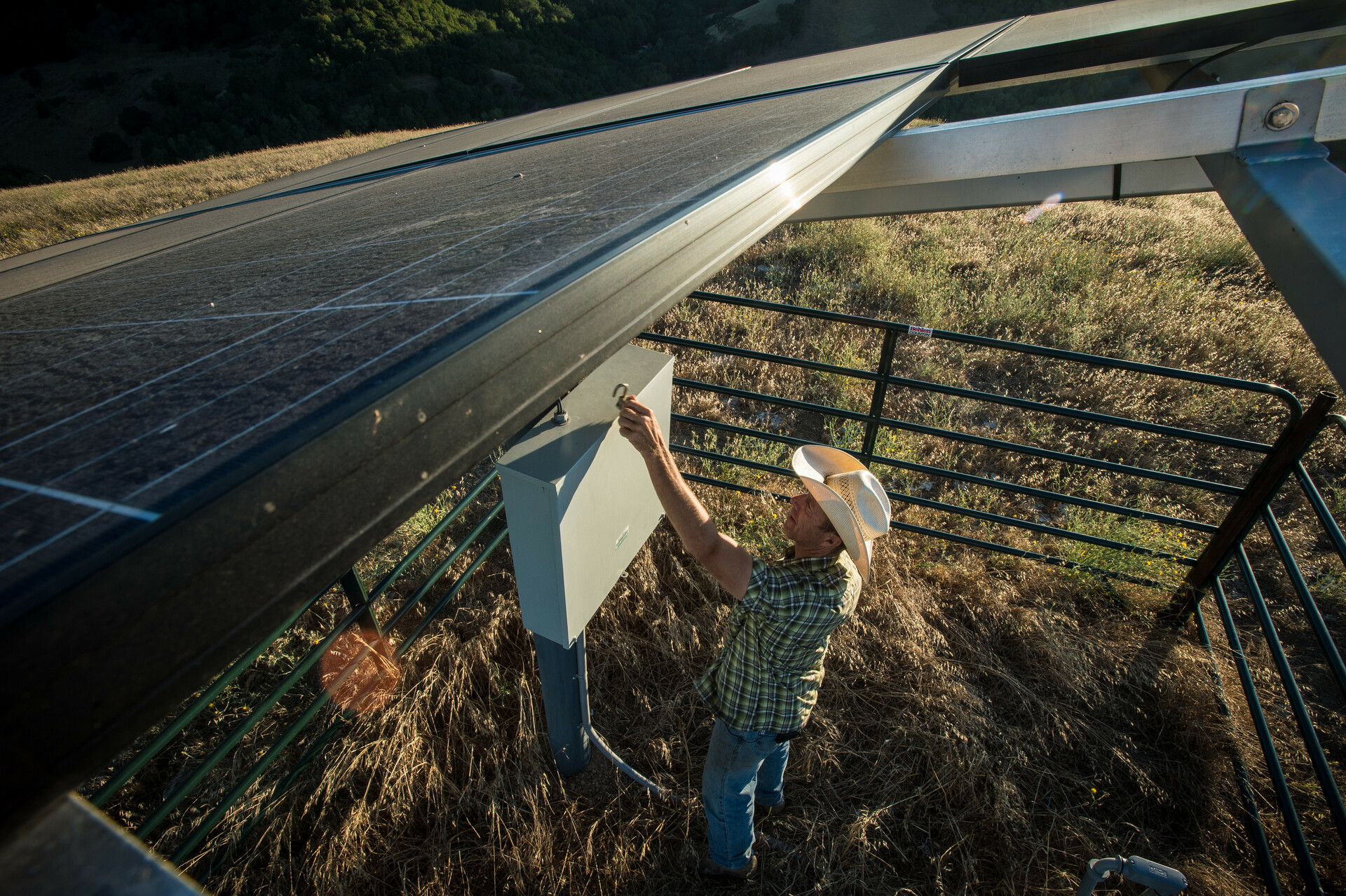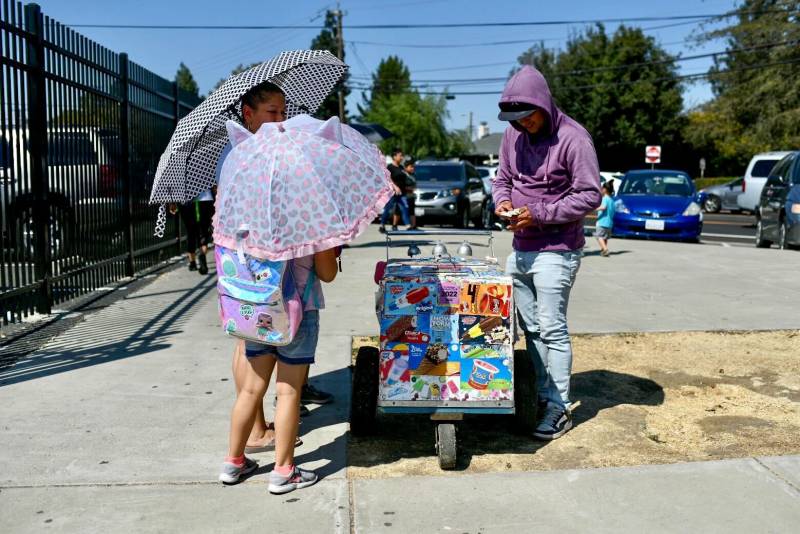The heat wave suffocating the Bay Area is likely the longest and hottest here in more than a hundred years, and the climate emergency is making extreme heat events like this a regular part of our lives.
During the peak of this heat wave, all-time-high records were shattered across the Bay Area — 116 degrees Fahrenheit in Sacramento, 115 degrees in Santa Rosa and 109 degrees in San José.
KQED’s Brian Watt talked with KQED climate reporter Laura Klivans about why the heat is so intense, and what people can do to address the climate crisis and protect themselves from heat illness.
This interview has been edited for length and clarity.

BRIAN WATT: This intensity and duration — is that something we can attribute to climate change?
LAURA KLIVANS: It is. Climate scientists say there is no question this heat wave is linked to the climate crisis, which makes heat waves hotter and longer.



